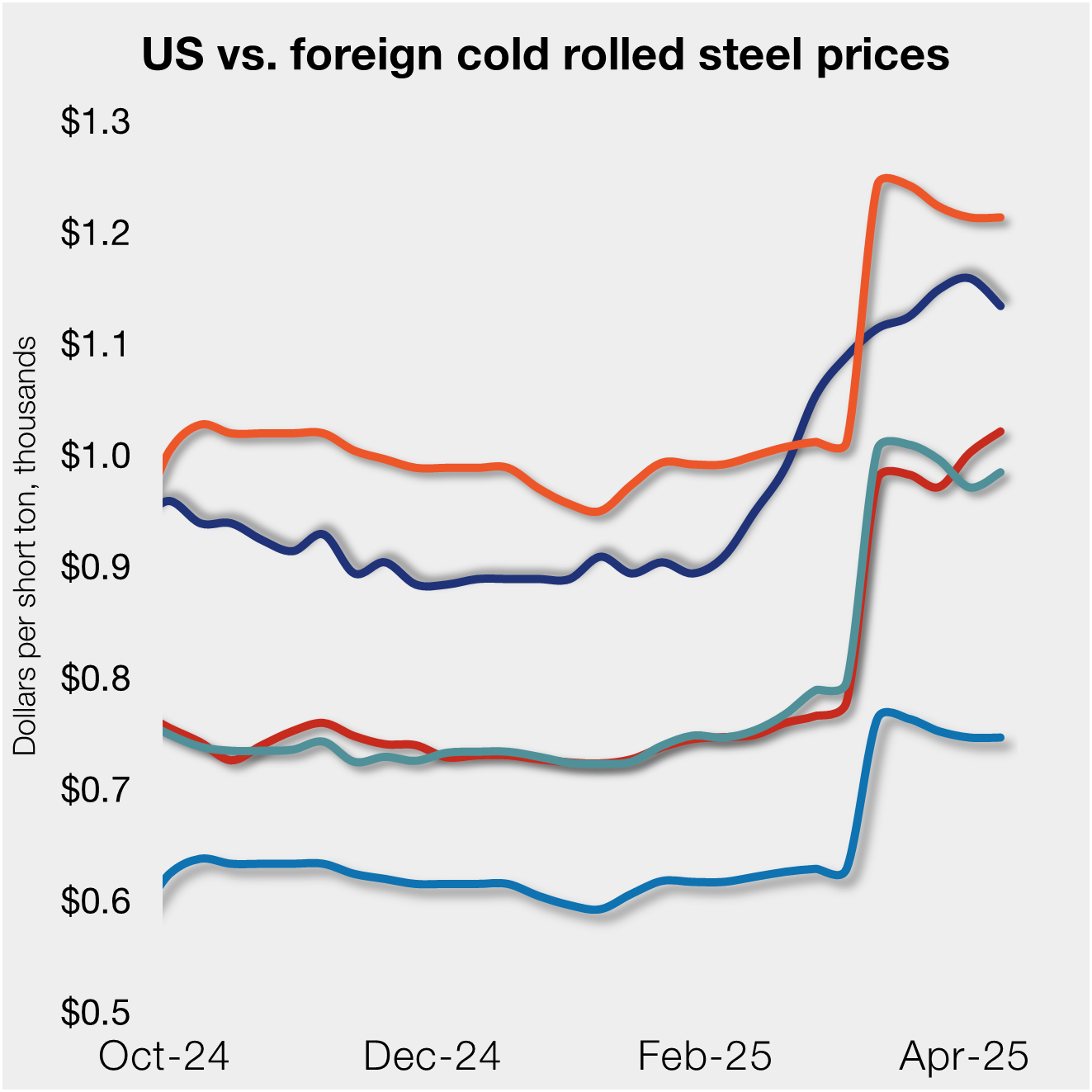Steel Products

Bell: Buy clean programs need a single carbon emissions standard for steel
Written by Philip Bell
December 1, 2023
The Biden administration’s climate ambitions are laudable. Buy Clean programs have the potential to meaningfully reduce CO2 emissions, supporting the American steel industry and its workers.
Buying clean steel
In February 2022, the administration launched the federal Buy Clean initiative and established its Buy Clean Task Force. These programs prioritize the use of American-made, low carbon construction materials in federal projects. In the steel sector, a well-designed Buy Clean standard can accelerate decarbonization while supporting American manufacturing. Buy Clean programs include those funded through the Bipartisan Infrastructure Law and the Inflation Reduction Act (IRA). They are implemented through numerous federal agencies. One such agency is the General Services Administration (GSA).
The IRA provides $2.15 billion for the GSA “to acquire and install materials and products for use in the construction or alteration of buildings.” The materials purchased under this program are limited to those that “have substantially lower levels of embodied greenhouse gas (GHG) emissions.”
The EPA published an interim determination in December 2022, defining what constitutes “substantially lower” embodied emissions. On May 16, 2023, the GSA announced its interim emissions standards and established a pilot program. The program covers 11 projects and comprises an estimated $300 million of low carbon materials. For multiple steel product categories, the GSA set separate (or bifurcated) standards for steel products made by integrated mills and electric arc furnaces (EAFs). How these standards are developed form the basis of federal Buy Clean principles.
The US government should align itself with the Buy Clean and IRA principles to ensure it purchases the cleanest steel available. Using a dual or bifurcated scale to evaluate steel’s GHG emissions could lead to the purchase of products that are misleadingly classified as clean.
Choosing the right approach
A bifurcated scale uses a methodology that favors steel produced by high-emitting processes, rather than steel made from recycled materials. It holds some steelmakers’ products to a weak carbon-intensity standard while holding other steelmakers’ products to a tough standard.
That’s not fair to anyone. It penalizes steelmakers who have invested in cleaner steelmaking routes. It hurts national and global efforts to reduce carbon emissions in core manufacturing sectors. And it shortchanges taxpayers whose elected officials voted for a bill containing Buy Clean requirements.
The government’s procurement policy adheres to the Buy Clean provision in the IRA. In our opinion the policy should be about one thing: getting the cleanest steel available. This is done by adopting a single standard for steel, regardless of how it is made. There is also growing support for this concept.
Steel Climate Standard
This year, the Global Steel Climate Council published the Steel Climate Standard.
The Steel Climate Standard is a single scale for measuring the carbon intensity of steel. It measures our progress toward a lower-emissions world. Buying steel that meets the standard ensures that you are getting the cleanest steel available.
The standard was designed to do three things:
- Provide a single, process-agnostic framework for steel product certification. Establish science-based emissions target-setting that applies to all steel producers equally on a global basis.
- Allow all steel customers to know the carbon emissions associated with the steel products they are purchasing.
- Create an industry standard for achieving the emissions reduction goals in the Paris Climate Agreement by 2050.
The Steel Climate Standard lets no one off the hook. To meet the standard, every steelmaker must hit emissions reduction targets on the path to net zero emissions by 2050.
The GSA recently announced 150 construction projects tentatively selected for funding under the IRA. The $2 billion investment included $388 million for steel products.
The announcement reaffirmed the Biden administration’s commitment to “prioritizing the purchase of asphalt, concrete, glass, and steel that have lower levels of GHG emissions associated with their production, use, and disposal.” This is a positive development that shows the GSA’s commitment to funding and starting projects as the IRA mandates. We applaud the agency for that.
It is our sincere hope that the administration decides on a single scale for GHG emissions emitted by steel production. We urge the GSA to hold all steel to the same standard and ensure that the US government buys the cleanest products available.
Philip Bell
Read more from Philip BellLatest in Steel Products

AISI: Raw steel production levels off near six-month high
The volume of raw steel produced by US mills remained relatively flat last week, maintaining the rebound seen one week prior, according to the American Iron and Steel Institute (AISI). Previously at the second-highest rate of the year, production continues to hold at one the strongest levels recorded over the last six months.

Nucor keeps HRC price unchanged
Nucor has kept its weekly hot-rolled (HR) coil price flat this week, after a marginal cut the previous week.

SMU flat-rolled market survey results now available
SMU’s latest steel buyers market survey results are now available on our website to all premium members. After logging in at steelmarketupdate.com, visit the pricing and analysis tab and look under the “survey results” section for “latest survey results.” Past survey results are also available under that selection. If you need help accessing the survey results, or if […]

CRU tariff webinar replay now available
CRU’s latest webinar replay on how Trump’s tariffs affect the global steel market is now available on our website to all members. After logging in at steelmarketupdate.com, visit the community tab and look under the “previous webinars” section of the dropdown menu. You’ll find not only this special CRU webinar but also all past Community […]

US, offshore CRC prices diverge
US cold-rolled (CR) coil prices declined this week, slipping for the first time since early February. Most offshore markets deviated, moving higher this week.
